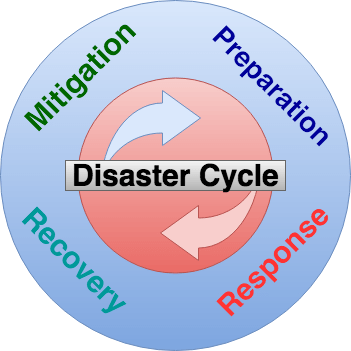Introduction
In the modern digital age, organizations are increasingly reliant on technology and data to drive their operations. However, with the rise of cyber threats, natural disasters, and human errors, it’s crucial for businesses to have a robust disaster recovery plan in place. A well-designed plan can help mitigate the impact of potential disasters and ensure business continuity. In this blog post, we will explore the key steps involved in creating a comprehensive disaster recovery plan for information security incidents.
Step 1: Identify Potential Risks
The first step in developing a disaster recovery plan is to identify the potential information security incidents that could occur. These may include data breaches, cyber-attacks, natural disasters, hardware failures, or human errors. By assessing the likelihood and potential impact of each incident, you can prioritize your efforts and allocate resources effectively.
Step 2: Establish a Response Team
Creating a dedicated response team is crucial for the development and execution of your disaster recovery plan. This team should consist of representatives from various departments, including IT, security, legal, and communications. Each member should have clearly defined roles and responsibilities to ensure a coordinated response in times of crisis.

Step 3: Conduct a Risk Assessment
Perform a comprehensive assessment of your organization’s information systems, networks, and data assets. Identify critical systems, applications, and data that are essential for your business operations. This evaluation will help you prioritize your recovery efforts and allocate resources accordingly.
Step 4: Define Recovery Objectives
Establish recovery time objectives (RTOs) and recovery point objectives (RPOs) for each critical system. RTO defines the acceptable downtime or how quickly systems need to be restored, while RPO determines the maximum acceptable data loss. These objectives will guide your recovery efforts and help set realistic expectations.
Step 5: Develop Incident Response Procedures
Outline step-by-step procedures for responding to different types of information security incidents. This should include details on how to detect, analyze, contain, eradicate, and recover from incidents. Assign specific responsibilities to team members for each step to ensure a structured and efficient response.
Step 6: Backup and Data Protection
Implement regular backup procedures for critical data and systems. Ensure that backups are performed frequently and stored securely, both on-site and off-site. Consider implementing encryption and access controls to protect sensitive data from unauthorized access.
Step 7: Test and Update the Plan
Regularly test your disaster recovery plan through tabletop exercises or simulated incidents. This helps identify any gaps or weaknesses in the plan and allows for necessary adjustments and updates. Keep the plan up to date with evolving technologies, industry best practices, and lessons learned from real incidents.
Step 8: Communication and Notification
Develop a communication plan to ensure that all stakeholders, including employees, customers, partners, and regulatory bodies, are promptly notified in the event of an information security incident. Determine the appropriate channels and messages to be used for each audience to maintain transparency and trust.
Step 9: Training and Awareness
Provide regular training and awareness programs to educate employees about the disaster recovery plan, their roles and responsibilities, and incident response procedures. Regularly update the training to reflect new risks and technologies, ensuring that everyone is well-prepared to respond effectively.
Step 10: Regular Review and Maintenance
Information security threats and technologies evolve over time, so it’s crucial to regularly review and update your disaster recovery plan. Consider changes in your organization’s infrastructure, industry regulations, and lessons learned from real incidents to stay ahead of potential risks.
Conclusion
A comprehensive disaster recovery plan for information security incidents is vital for organizations to mitigate the impact of potential disasters and ensure business continuity. By following the steps outlined in this blog post, you can create a robust plan that will help you respond effectively to incidents, protect your critical assets, and minimize downtime. Remember, disaster recovery planning is an ongoing process that requires regular testing, training, and updating to adapt to ever-changing threats and technologies.

